3DWarehouse
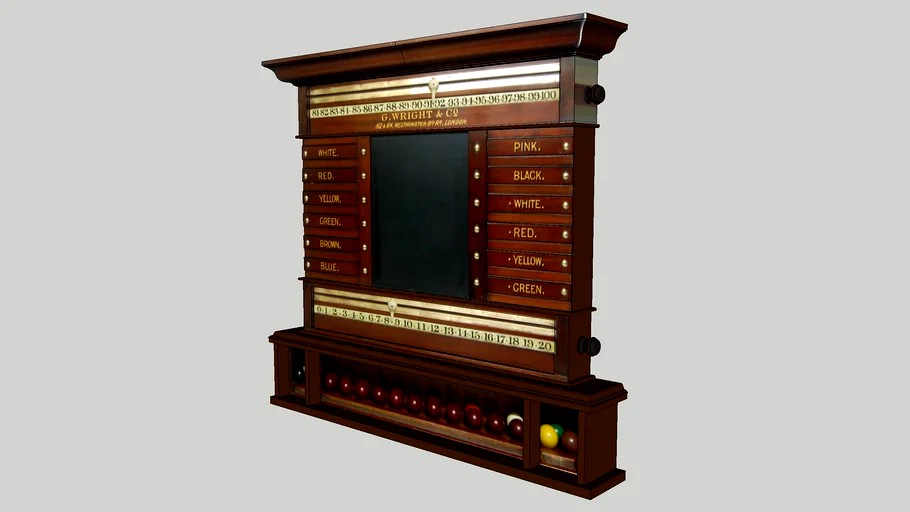
Victorian Mahogany Life Pool & Billiards Scoreboard with Ball Cupboard by George Wright & Co, London
by 3DWarehouse
Last crawled date: 9 months, 3 weeks ago
Victorian Mahogany Life Pool & Billiards Scoreboard with Ball Cupboard by George Wright & Co, London A mid-Victorian mahogany life pool and billiard scoreboard with glass fronted ball cupboard by George Wright & Co of London. This magnificent and early example of a life pool and billiard scoreboard is comprised of a billiard score marker with brass runners above and below and square sectioned, painted score indicators which allow for scoring up to 100. These are manoeuvred by means of an ebonised turned knob to the right hand side of the board. To the centre section of the board is a blackboard with twelve wooden slides with painted colour indications for the purposed of playing life pool. The player would be allocated a coloured ball and the slide would be pulled out to reveal three stars which indicate that player’s number of lives during the game. The player would cue their coloured ball into another player’s colour with the hope of potting their opponent’s ball. Each time a player’s ball is potted, they lose a life and the slide is pushed in to cover one of the stars. When only one player remains then the “pool” is claimed by the winner. The game was a popular betting game during the nineteenth century and got its name from the pool of money that was collected at the start of the game. The stars that slide out from the inside of the slide were an additional twist to the game where a player could buy back into the game by adding an additional wager and regaining a number of lives. Numerous different rules exist around life pool but the star is considered only available if a certain number of people are playing. I have seen this as low as six but in this instance, Wright had manufactured the board to allow for the star to be available for play when using up to eight players. This is the reason the star does not appear in the final four slides of the right hand side of the board. Below the board is a superb mahogany ball cupboard which has a glass fronted and hinged bottom opening door revealing a three sectioned cupboard fitted out with twenty eight separate ball cups. The company of George Wright & Co was founded in 1868 and were initially based at 162 & 164 Westminster Bridge Road where they seemed specialised in the manufacture of billiard dinner tables. These rare tables had an ingenious mechanism to allow for the raising and lowering of the legs to ensure that, “the sitter had no inconvenience to the knee in sitting at the table”. By 1876, the company had expanded their footprint and were now advertised as trading from 158 – 162 Westminster Bridge Road and is referred to as Geo Wright & Co. According to their advertising, the company had Royal Appointment to the King and Queen and also to the Prince of Wales. In addition, the company seem to have been regular attendees at the various world exhibitions that were commonplace during the nineteenth century and the company’s advertisements proudly attest to having won twenty one prize medals and and two gold medals by 1900. It is thought that the founder George Wright retired in 1896, leaving the business to his brother Henry Wright. George Wright went on to become a brick manufacturer and a Justice of the Peace and Alderman to the County of Middlesex. He was knighted in 1926, a year before his death. The company however, continued and during the Edwardian period had moved to new premises on Argyle Street in London and had further premises in Manchester on Mosley Street. By the late twenties, the business was facing financial difficulties and was subsumed in 1928 by Orme & Sons Ltd. Orme were themselves merged with Burroughes & Watts shortly afterwards. This scoreboard is a rare early survivor from this quality manufacturer. Given the trading dates written on the board, it is possible to date the piece to between 1868 (when the company was founded) and 1876 which was the point where Wright expanded the premises to incorporate number 158 Westminster Bridge Road.
Similar models
cg_trader
$4

Pool Balls
...pool balls
cg trader
3d pool balls, available in blend, balls billiard billiards board eight game, ready for 3d animation and ot
unity_asset_store
$9

Pool Table Billiard Board Cue Ball Red Blue Green
...ble billiard board cue ball red blue green asset from 3dmaster. find this & other props options on the unity asset store.
3dwarehouse
free

Scoreboard
...scoreboard
3dwarehouse
a dumb scoreboard #board #quarters #score #score_board #scoreboard #time
archive3d
free

Scoreboard 3D Model
...e3d
scoreboard indicator board score-board
scoreboard - 3d model for interior 3d visualization.
3d_ocean
$15

Billiard (Pool) Table
...docean
ball balls billiard cue material pool snooker table
billiard table with 2 cues and 17 balls files included .max & .3ds
cg_trader
free

8BallPool Table with Ball Textures
...e with all balls textures 8ball pool sport billiard football toy and game player sports equipment football player football player
thingiverse
free

Fort Board Game Tray by darkandlong
...d out and kept by the scoreboard during the game.
the player score/fort token section is a bit of a tight fit for bigger fingers.
3dwarehouse
free

RRHS Scoreboard
...rd
3dwarehouse
the scoreboard at the rrhs stadium. #board #high #pirates #river #rocky #rrhs #school #score #scoreboard #stadium
3d_ocean
$5

Billard Balls
...low poly billiard balls. numbering from 1 to 15 plus the cue ball. each of the balls excluding the cue ball has a 4k texture map.
3d_export
$15

Scoreboard with Score Clock 3D Model
...botron jumbo tron big screen low poly polygon game ready
scoreboard with score clock 3d model tronitecgamestudios 12049 3dexport
Scoreboard
archive3d
free

Scoreboard 3D Model
...e3d
scoreboard indicator board score-board
scoreboard - 3d model for interior 3d visualization.
turbosquid
$35

stadium scoreboard
... available on turbo squid, the world's leading provider of digital 3d models for visualization, films, television, and games.
turbosquid
$2

Snooker Scoreboard
... available on turbo squid, the world's leading provider of digital 3d models for visualization, films, television, and games.
turbosquid
free

Scoreboard Font
... available on turbo squid, the world's leading provider of digital 3d models for visualization, films, television, and games.
3d_export
$5

3d boxing scoreboard
...reboard can be an impressive element for your projects.<br>low polygon, realistic image, realistic coating, fast rendering.
cg_studio
$32

Jumbotron scoreboard hexagon3d model
...ron
.max .fbx .3ds .obj - jumbotron scoreboard hexagon 3d model, royalty free license available, instant download after purchase.
3d_export
$27

Jumbotron scoreboard double 3D Model
...e board baseball sport poly crowd clock basketball goal arena hockey
jumbotron scoreboard double 3d model kreatura 98237 3dexport
3d_export
$24

Jumbotron scoreboard octagon 3D Model
... board baseball sport poly crowd clock basketball goal arena hockey
jumbotron scoreboard octagon 3d model kreatura 98213 3dexport
3d_export
$15

Scoreboard with Score Clock 3D Model
...botron jumbo tron big screen low poly polygon game ready
scoreboard with score clock 3d model tronitecgamestudios 12049 3dexport
turbosquid
$60

Joe Louis Arena Scoreboard
...louis arena scoreboard for download as c4d, 3ds, fbx, and obj on turbosquid: 3d models for games, architecture, videos. (1693937)
Wright
turbosquid
$5

Wright Sconce
...free 3d model wright sconce for download as max, fbx, and obj on turbosquid: 3d models for games, architecture, videos. (1661228)
cg_studio
$199

Wright Flyer3d model
...flyer
.max .obj .mb .lwo .fbx .c4d .3ds - wright flyer 3d model, royalty free license available, instant download after purchase.
turbosquid
$95

1903 Wright Flyer
... 3d model 1903 wright flyer for download as 3ds, max, and obj on turbosquid: 3d models for games, architecture, videos. (1298482)
turbosquid
$5

WRIGHT ROUND CHANDELIER
...del wright round chandelier for download as max, fbx, and obj on turbosquid: 3d models for games, architecture, videos. (1656074)
3d_export
$5

house in the wright style
... the archive fbx, obj. units of measurement in millimeters, building size 26m by 24m with pool inside polys: 21,357 verts: 29,213
turbosquid
$15

F.L. Wright Nightstand
... available on turbo squid, the world's leading provider of digital 3d models for visualization, films, television, and games.
turbosquid
$15

F.L. Wright Chest
... available on turbo squid, the world's leading provider of digital 3d models for visualization, films, television, and games.
3d_export
$199

Wright Flyer 3D Model
... first flyer plane us wright
wright flyer 3d model download .c4d .max .obj .fbx .ma .lwo .3ds .3dm .stl humster3d 103049 3dexport
cg_studio
$200

1903 Wright Flyer3d model
...odel
cgstudio
.3ds .max .obj .wrl - 1903 wright flyer 3d model, royalty free license available, instant download after purchase.
turbosquid
$50

Wright Flyer Kitty Hawk
...y free 3d model wright flyer kitty hawk for download as blend on turbosquid: 3d models for games, architecture, videos. (1620067)
Billiards
archibase_planet
free

Billiard
...billiard
archibase planet
billiard-table billiard
billiard 3ds model
archibase_planet
free

Billiard
...billiard
archibase planet
billiard table table billiard
billiard n130814 - 3d model (*.gsm+*.3ds) for interior 3d visualization.
3d_ocean
$5

billiard table
...billiard table
3docean
billiard cue billiard table games
billiard cue, bolls ,billiard table
archibase_planet
free

Billiard balls
...illiard balls billiard-balls billiard-ball billiard ball
billiard balls n291211 - 3d model (*.3ds) for interior 3d visualization.
archibase_planet
free

Billiard balls
...planet
billiard balls billiard-balls billiard-ball
balls billiard n190713 - 3d model (*.gsm+*.3ds) for interior 3d visualization.
archibase_planet
free

Billiard table
...e
archibase planet
billiard-table billiard table
billiard table pyramid n130810 - 3d model (*.3ds) for interior 3d visualization.
turbosquid
$8

billiard
...d
turbosquid
royalty free 3d model billiard for download as on turbosquid: 3d models for games, architecture, videos. (1692322)
archibase_planet
free

Billiard table
...chibase planet
billiard table table billiard
billiard table n130815 - 3d model (*.gsm+*.3ds+*.max) for interior 3d visualization.
turbosquid
$12

Billiard
...ty free 3d model billiard for download as blend, fbx, and obj on turbosquid: 3d models for games, architecture, videos. (1595009)
archive3d
free

Billiard 3D Model
...billiard 3d model
archive3d
billiard-table billiard
billiard 3ds model
Mahogany
3ddd
$1

MAHOGANY
...mahogany
3ddd
mahogany , угловой
диван mahogany елитная мебль индонезия, размер 306х176
design_connected
$18

Mahogany Armchair
...mahogany armchair
designconnected
n/a mahogany armchair armchairs computer generated 3d model. designed by n/a.
turbosquid
$50

Bed-Mahogany
... available on turbo squid, the world's leading provider of digital 3d models for visualization, films, television, and games.
turbosquid
$15

Mahogany etagere
... available on turbo squid, the world's leading provider of digital 3d models for visualization, films, television, and games.
turbosquid
$15

Mahogany Box
... available on turbo squid, the world's leading provider of digital 3d models for visualization, films, television, and games.
turbosquid
$13

Mahogany Table
... available on turbo squid, the world's leading provider of digital 3d models for visualization, films, television, and games.
turbosquid
$9

Wardrobe Mahogany
... available on turbo squid, the world's leading provider of digital 3d models for visualization, films, television, and games.
turbosquid
$5

Cajon - mahogany
... cajon - mahogany for download as jpg, 3ds, max, obj, and fbx on turbosquid: 3d models for games, architecture, videos. (1375939)
3ddd
free

Mahogany sideboard
...mahogany sideboard
3ddd
комод
размер: 52x110x94
5k полигонов
turbosquid
$19

Mahogany round table
...oyalty free 3d model mahogany round table for download as max on turbosquid: 3d models for games, architecture, videos. (1193391)
George
design_connected
$16

George
...george
designconnected
walter knoll george computer generated 3d model. designed by eoos.
3ddd
$1
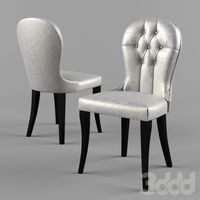
Georges
... angelo cappellini
стул georges фабрики angelo cappellinihttp://www.operacontemporary.com/
turbosquid
$10

George
... available on turbo squid, the world's leading provider of digital 3d models for visualization, films, television, and games.
3ddd
$1
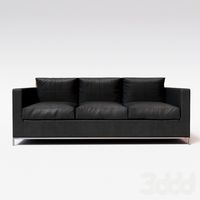
George Sofa
...e , beb
george sofa by b&b; italy.
дизайнер: antonio citterio
материалы vray, corona
3ddd
$1
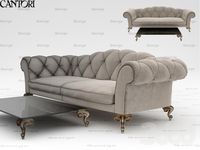
Cantori, George
...cantori, george
3ddd
cantori
неплохой диван + стол ит. фабрики cantori, коллекция george
design_connected
$16
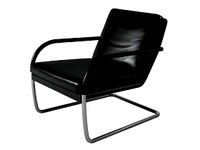
George Lounge
...george lounge
designconnected
walter knoll george lounge computer generated 3d model. designed by eoos.
3ddd
$1

Cantori / George
...cantori / george
3ddd
cantori
неплохой стол + стул ит. фабрики cantori, коллекции george + raffaello
3ddd
$1

George Floor Lamp
...george floor lamp
3ddd
george
http://www.stylecraft.com.au/product/george-floor-lamp
3ddd
$1
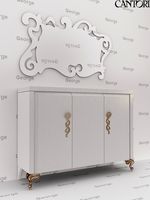
Cantori, George
...dd
cantori , комод
неплохой комод + зеркало ит. фабрики cantori, колекции: george + aida
3ddd
$1
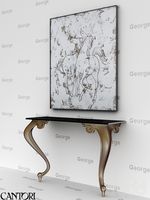
Cantori / George
...
cantori , консоль
неплохая консоль + дек. панель, ит. фабрики cantori, коллекция george
Victorian
3ddd
$1

Victorian tap
...victorian tap
3ddd
victorian , смеситель
victorian tap
3ddd
free

Teca Victorian
...есной светильник teca victorian cosmorelax
материал стекло, ткань
цвет соответствует изображению
размер ø0.300*1.200m
цоколь e27
3d_ocean
$10

Victorian Bathtub
...3d studio max 2010 and rendered with vray 2.1 (just high poly, fbx and .obj format with textures (jpg format) and vray materia...
turbosquid
$99

Victorian House
...id
royalty free 3d model victorian house for download as max on turbosquid: 3d models for games, architecture, videos. (1286369)
turbosquid
$70

Victorian Building
...
royalty free 3d model victorian building for download as max on turbosquid: 3d models for games, architecture, videos. (1396132)
turbosquid
$17

Victorian House
...id
royalty free 3d model victorian house for download as max on turbosquid: 3d models for games, architecture, videos. (1396173)
turbosquid
$15

Victorian House
...id
royalty free 3d model victorian house for download as fbx on turbosquid: 3d models for games, architecture, videos. (1638630)
turbosquid
$5

Victorian Table
...id
royalty free 3d model victorian table for download as c4d on turbosquid: 3d models for games, architecture, videos. (1356311)
turbosquid
$1

Victorian Chair
...uid
royalty free 3d model victorian chair for download as ma on turbosquid: 3d models for games, architecture, videos. (1399732)
turbosquid
$12

Victorian Drawer
...ty free 3d model victorian drawer for download as obj and fbx on turbosquid: 3d models for games, architecture, videos. (1416805)
London
3ddd
free

LONDON
...london
3ddd
london
шкаф "london"
3ddd
$1

LONDON
...london
3ddd
london , тумба
приставка к письменному столу "london"
3ddd
$1

LONDON
...london
3ddd
london , письменный
письменный стол с брифингом "london"
3ddd
$1

Диван London
...ndon
3ddd
versace home , london
диван london от итальянского производителя versace home.
3ddd
$1

Royal London
...on
3ddd
royal london , наручные
http://watch.24k.ua/royal-london/41087-01.html
turbosquid
$199

London
...y free 3d model london for download as 3ds, max, obj, and fbx on turbosquid: 3d models for games, architecture, videos. (1219244)
turbosquid
$21

London
... available on turbo squid, the world's leading provider of digital 3d models for visualization, films, television, and games.
3ddd
$1

London
...ndon, от meblissimo, max12 + fbx, рендер - vray2.00.03 + материал, текстуры.
модель размещена в категории фри по желанию автора.
3ddd
$1
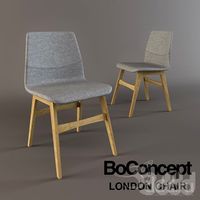
BoConcept London
...boconcept london
3ddd
boconcept
producent: boconcept
model: london chair
www.boconcept.com
3d_ocean
$20

London Eye
...ennium wheel is the tallest ferris wheel in europe at a giant 135 metres tall!. it’s more popular than the taj mahal and the p...
Cupboard
3d_export
$5

cupboard
...cupboard
3dexport
cupboard
3ddd
$1

cupboard
...cupboard
3ddd
стеллаж
classic cupboard
archibase_planet
free

Cupboard
...cupboard
archibase planet
cupboard buffet cabinet
cupboard - 3d model (*.gsm+*.3ds) for interior 3d visualization.
archibase_planet
free

Cupboard
...cupboard
archibase planet
cupboard cabinet buffet
cupboard 1 - 3d model (*.gsm+*.3ds) for interior 3d visualization.
archibase_planet
free

Cupboard
...cupboard
archibase planet
cupboard cabinet buffet
cupboard 2 - 3d model (*.gsm+*.3ds) for interior 3d visualization.
archibase_planet
free

Cupboard
...cupboard
archibase planet
cupboard buffet cabinet
cupboard n250512 - 3d model (*.gsm+*.3ds) for interior 3d visualization.
archibase_planet
free

Cupboard
...cupboard
archibase planet
cupboard cabinet buffet
cupboard n021112 - 3d model (*.gsm+*.3ds) for interior 3d visualization.
archibase_planet
free

Cupboard
...cupboard
archibase planet
cupboard dresser kitchen cabinet
cupboard - 3d model (*.gsm+*.3ds) for interior 3d visualization.
archibase_planet
free

Cupboard
...cupboard
archibase planet
buffet small cupboard cabinet
cupboard - 3d model (*.gsm+*.3ds) for interior 3d visualization.
archibase_planet
free

Cupboard
...cupboard
archibase planet
cupboard glasscase cabinet shelving
cupboard - 3d model (*.gsm+*.3ds) for interior 3d visualization.
Co
turbosquid
$15

Robot Co
...alty free 3d model robot co for download as obj, c4d, and fbx on turbosquid: 3d models for games, architecture, videos. (1351209)
turbosquid
$10

co carton
... available on turbo squid, the world's leading provider of digital 3d models for visualization, films, television, and games.
3ddd
$1

Heathfield&Co Verdi
...heathfield&co verdi
3ddd
heathfield&co
лампа настольная heathfield&co; verdi
3ddd
$1

стол Moletta&Co
...стол moletta&co
3ddd
стол moletta&co;
3ddd
$1

Gervasoni Letti&Co
...га , картина , тумбочка
gervasoni letti&co;
3ddd
free

Комод в стиле rocco-co
...occo-co , комод , резьба
комод в стиле rocco-co
turbosquid
$5

Barr-Co Salt
...squid
royalty free 3d model barr-co salt for download as max on turbosquid: 3d models for games, architecture, videos. (1149267)
turbosquid
$2

Co working space
...id
royalty free 3d model co working space for download as ma on turbosquid: 3d models for games, architecture, videos. (1477968)
3ddd
free

heathfield & co lotus gold
...heathfield & co lotus gold
3ddd
heathfield&co
heathfield & co lotus gold - 620h
3ddd
$1

Heathfield & Co Bayern Ivory
... bayern ivory
3ddd
heathfield&co , bayern ivory
heathfield & co bayern ivory
Pool
3d_export
$19

Swimming pool outdoor pool
...swimming pool outdoor pool
3dexport
swimming pool, outdoor pool
3ddd
$1

Russian pool and pool lamp
...russian pool and pool lamp
3ddd
mosaik
russian pool table and pool lamp mosaik oro nero.
designed by pino vismara.
turbosquid
$1

Pool
...ol
turbosquid
royalty free 3d model pool for download as max on turbosquid: 3d models for games, architecture, videos. (1685535)
3d_export
$5

swimming pool
...swimming pool
3dexport
swimming pool
3d_export
$5

swimming pool
...swimming pool
3dexport
swimming pool
3d_export
$10

Pool equipment
...pool equipment
3dexport
pool equipment landshaft
turbosquid
$35

Pool
... available on turbo squid, the world's leading provider of digital 3d models for visualization, films, television, and games.
turbosquid
$20

Pool
... available on turbo squid, the world's leading provider of digital 3d models for visualization, films, television, and games.
turbosquid
$20

Pool
... available on turbo squid, the world's leading provider of digital 3d models for visualization, films, television, and games.
turbosquid
$16

Pool
... available on turbo squid, the world's leading provider of digital 3d models for visualization, films, television, and games.
Life
3ddd
$1

Life
...life
3ddd
life
автор модели: aeroslon
3d_ocean
$10

Life
...life
3docean
3ds arman3dg games icon life low max poly set
life icon set. (3ds max file- 2010, 2011, 2012, 2013)
3ddd
$1

Life
... costantini pietro
сидение и спинка обита тканью. спинка украшена каретной стяжкой. концы ножек украшены металлом.
3d_export
$15

life vest life jacket safety jacket
...life vest life jacket safety jacket
3dexport
life vest life jacket safety jacket
3ddd
free

Life
...8
depth cm 80
height cm 93
если вам понравилась моя модель - посмотрите и остальные:http://3ddd.ru/users/stas-t/models
3ddd
free

ROYAL LIFE
...royal life
3ddd
royal life , капитоне
полукресло
3d_export
$5

star of life
...star of life
3dexport
a little model of the symbolf of star of life
3ddd
$1

Royal Life
...royal life
3ddd
royal life
автор модели: aeroslon
3ddd
$1

Royal Life
...royal life
3ddd
royal life
автор модели: aeroslon
3ddd
$1

Life Day
...life day
3ddd
тумба
тумба life day.смоделировано по фотографии
Ball
turbosquid
$5

Ball on a Ball
...uid
royalty free 3d model ball on a ball for download as obj on turbosquid: 3d models for games, architecture, videos. (1484719)
archibase_planet
free
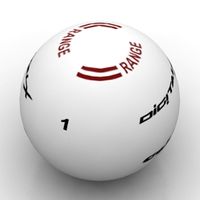
Ball
...ball
archibase planet
ball golf ball
ball - 3d model (*.gsm+*.3ds) for 3d visualization.
3d_export
$5

ball
...ball
3dexport
ball
archibase_planet
free

Ball
...ball
archibase planet
ball football soccer ball
ball n100714 - 3d model (*.gsm+*.3ds+*.max) for exterior 3d visualization.
3d_export
$5

ball
...ball
3dexport
soccer ball
archibase_planet
free
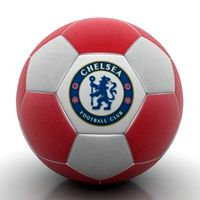
Ball
...ball
archibase planet
ball football
ball n100914 - 3d model (*.gsm+*.3ds+*.max) for 3d visualization.
3d_ocean
$5

Snooker Balls
... set balls snooker snooker balls white ball yellow ball
set snooker balls format include : .c4d .3ds .obj build in cinema 4d r13
3d_export
free

ball
...ball
3dexport
this is 3d model ball's
3d_ocean
$2

Soccer Ball
...soccer ball
3docean
ball red and yellow ball red ball soccer ball
a gorgeous red and yellow seamless soccer ball
3d_ocean
$5

Billard Balls
...low poly billiard balls. numbering from 1 to 15 plus the cue ball. each of the balls excluding the cue ball has a 4k texture map.
